Abstract
BACKGROUND: Immunization remains the primary strategy in both the control and prevention of common childhood diseases, particularly in the developing world. Immunization and preprimary health care services were commenced in a rural community in Nigeria in 1998, when vaccine coverage for all Expanded Program on Immunization (EPI) diseases (tuberculosis, polio, diphtheria, pertussis, tetanus, measles, and hepatitis B) was considerably low with only 43% of children fully immunized. METHODS: Children aged 0-2 years and living in a rural community were recruited into the study. Data on vaccination history was collected by both vaccination card and maternal history. Three hundred and twenty-seven children were recruited into the study. Study participants were vaccinated for EPI diseases. Hepatitis-B vaccine was administered at birth, and a combined diphtheria and tetanus toxoids, and pertussis whole cell vaccine (DTP) plus hepatitis-B vaccine was administered in a single injection after six weeks. RESULTS AND CONCLUSIONS: Two years after the program was started, immunization coverage rates were 94% for BCG, 88% for DTP (third dose), and 82% for measles. All antigens showed significant improvements from baseline values (p < 0.0001). Eighty four percent of children were fully immunized against all six diseases, compared with 43% at the commencement (p < 0.0001). Hepatitis-B coverage (three doses) was 58%. The vaccination program has significantly improved vaccination coverage and could be a model for under served, non-industrialized communities.
Full text
PDF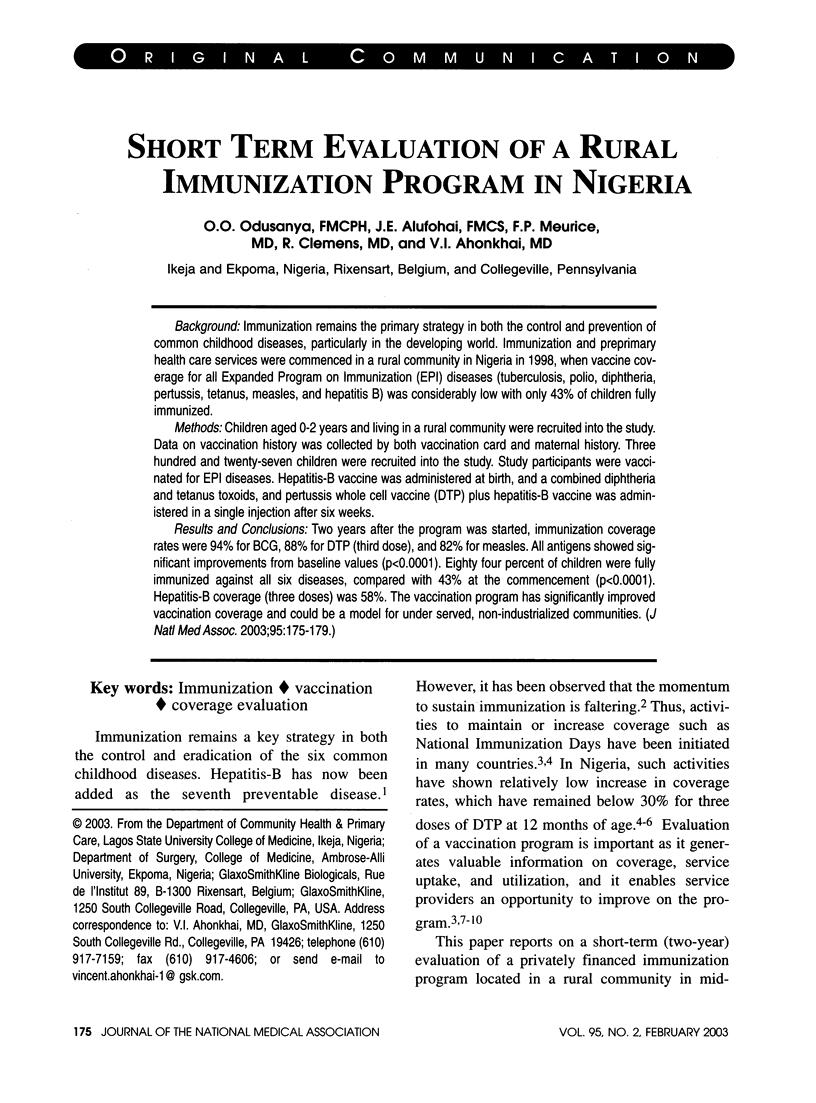
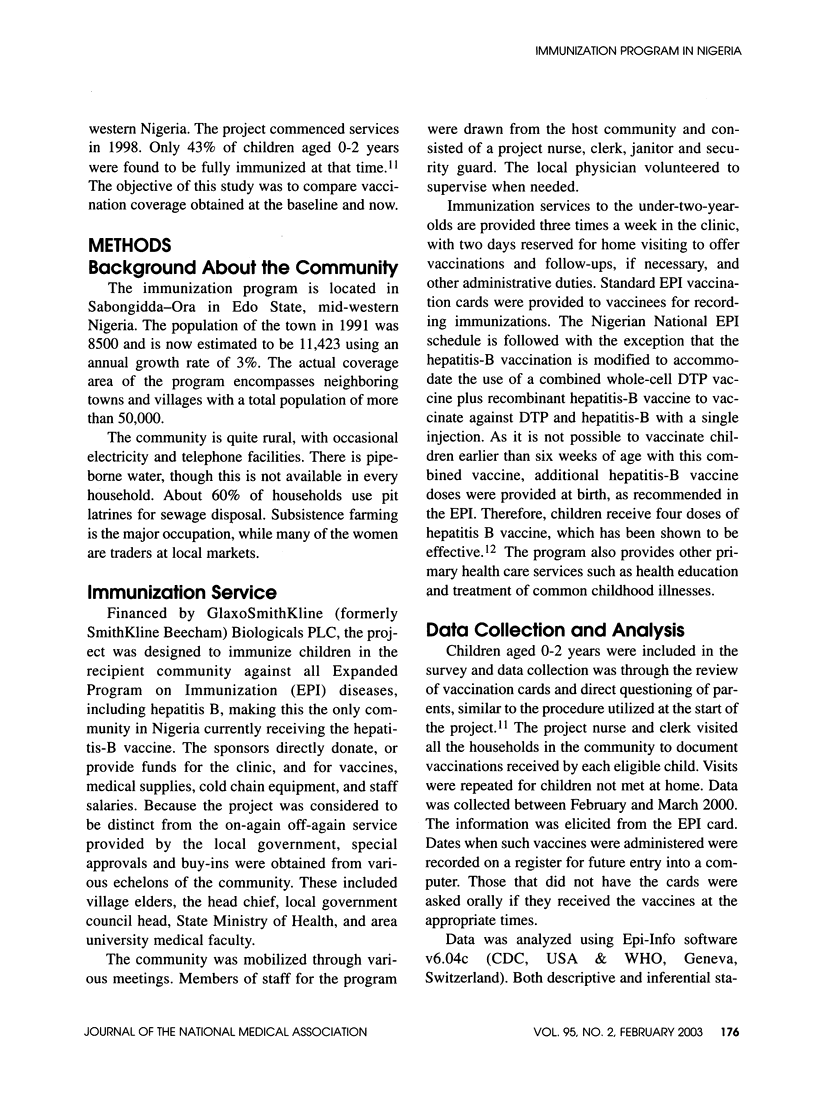
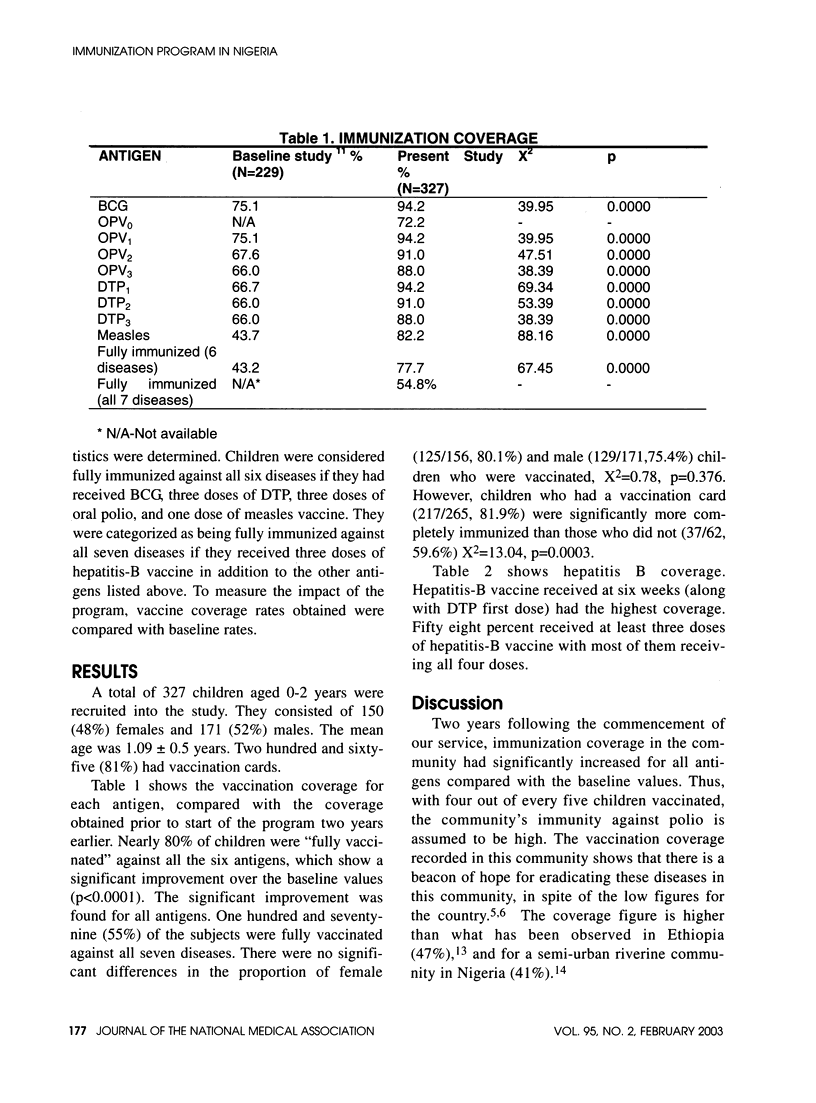
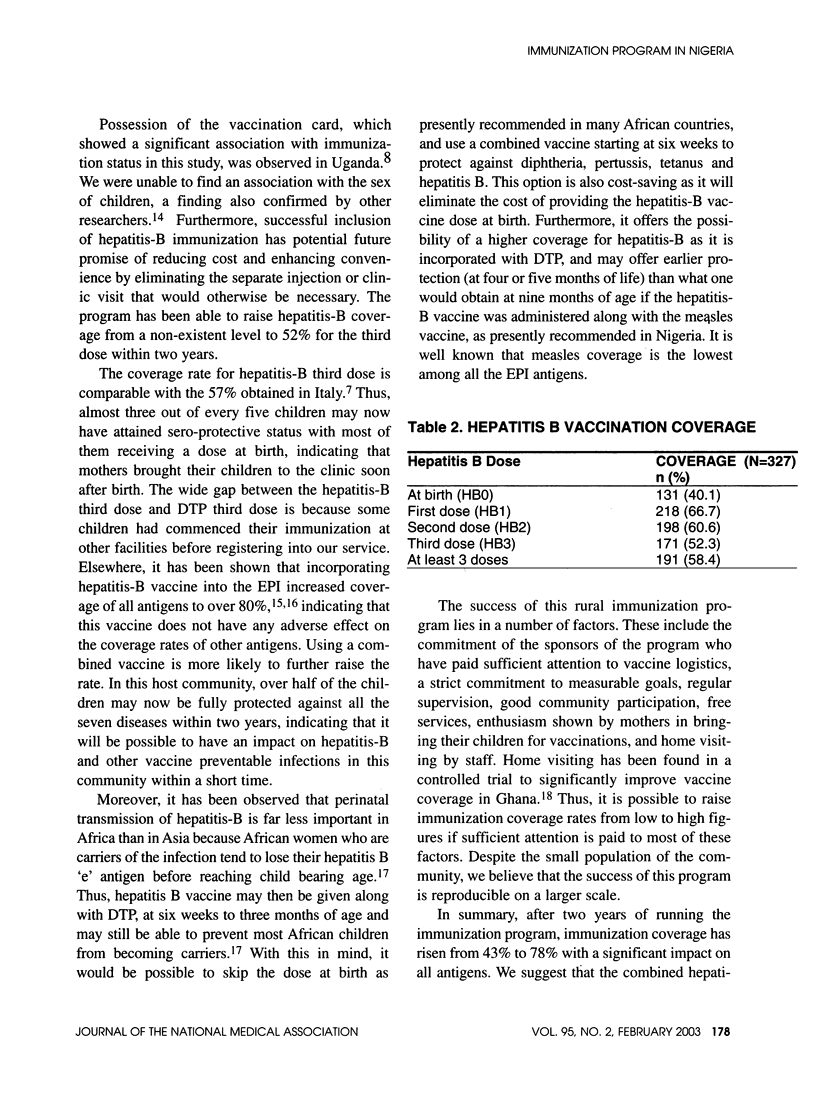
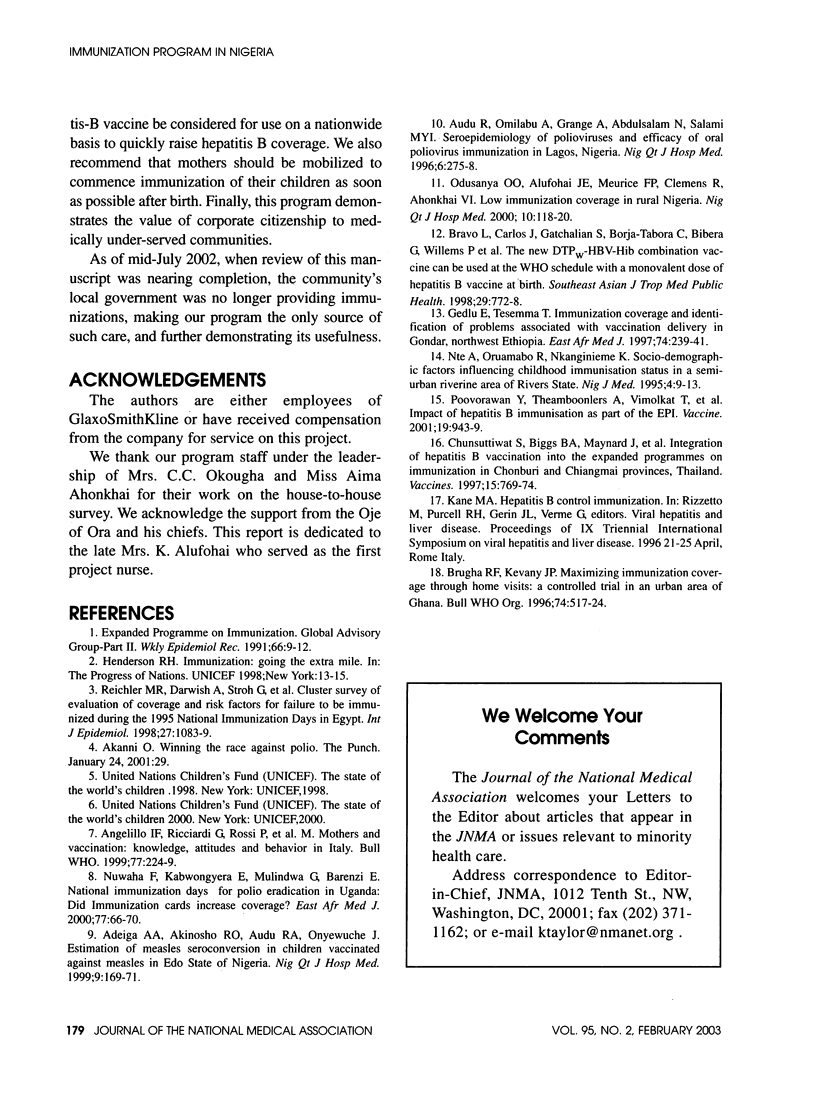
Selected References
These references are in PubMed. This may not be the complete list of references from this article.
- Angelillo I. F., Ricciardi G., Rossi P., Pantisano P., Langiano E., Pavia M. Mothers and vaccination: knowledge, attitudes, and behaviour in Italy. Bull World Health Organ. 1999;77(3):224–229. [PMC free article] [PubMed] [Google Scholar]
- Bravo L., Carlos J., Gatchalian S., Borja-Tabora C., Bibera G., Willems P., Safary A., Bock H. L. The new DTPw-HBV-Hib combination vaccine can be used at the who schedule with a monovalent dose of hepatitis B vaccine at birth. Southeast Asian J Trop Med Public Health. 1998 Dec;29(4):772–778. [PubMed] [Google Scholar]
- Brugha R. F., Kevany J. P. Maximizing immunization coverage through home visits: a controlled trial in an urban area of Ghana. Bull World Health Organ. 1996;74(5):517–524. [PMC free article] [PubMed] [Google Scholar]
- Gedlu E., Tesemma T. Immunization coverage and identification of problems associated with vaccination delivery in Gondar, north west Ethiopia. East Afr Med J. 1997 Apr;74(4):239–241. [PubMed] [Google Scholar]
- Nuwaha F., Kabwongyera E., Mulindwa G., Barenzi E. National immunisation days for polio eradication in Uganda: did immunisation cards increase coverage? East Afr Med J. 2000 Feb;77(2):66–70. doi: 10.4314/eamj.v77i2.46390. [DOI] [PubMed] [Google Scholar]
- Poovorawan Y., Theamboonlers A., Vimolket T., Sinlaparatsamee S., Chaiear K., Siraprapasiri T., Khwanjaipanich S., Owatanapanich S., Hirsch P., Chunsuttiwat S. Impact of hepatitis B immunisation as part of the EPI. Vaccine. 2000 Nov 22;19(7-8):943–949. doi: 10.1016/s0264-410x(00)00216-4. [DOI] [PubMed] [Google Scholar]
- Reichler M. R., Darwish A., Stroh G., Stevenson J., Al Nasr M. A., Oun S. A., Wahdan M. H. Cluster survey evaluation of coverage and risk factors for failure to be immunized during the 1995 National Immunization Days in Egypt. Int J Epidemiol. 1998 Dec;27(6):1083–1089. doi: 10.1093/ije/27.6.1083. [DOI] [PubMed] [Google Scholar]


